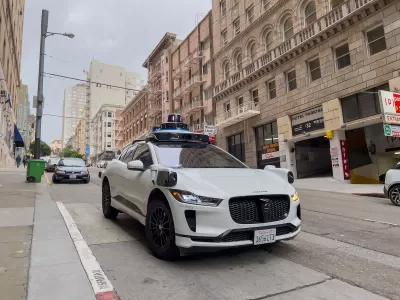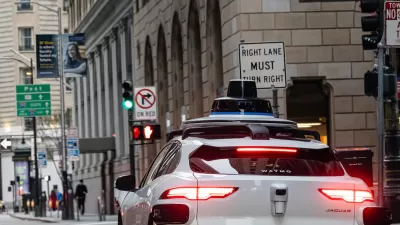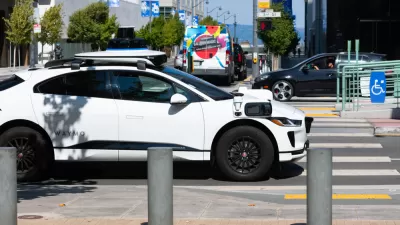Local officials want more control over how and where autonomous cars are deployed.

A series of proposed laws in California could clarify how commercial autonomous vehicles (or robotaxis) are regulated and give local governments more control over their deployment, reports Rebecca Bellan in Tech Crunch. “One bill, SB 915, stands out because it could give cities more power to set their own rules around robotaxis — things like hours of operation and appropriate pickup and drop-off locations.”
Self-driving cars became a major issue in California last year, when a state commission approved their deployment on city streets despite vocal opposition from local leaders.
Bellan outlines the proposed bills that will be considered in this legislative session, describing how each would impact AV deployment and regulation. Other bills require human operators in autonomous heavy-duty vehicles, call for geofencing protocols and more robust reporting, and open the door to fining car manufacturers for infractions committed by autonomous cars. None of the bills would allow cities to ban AVs outright, but industry leaders say the patchwork of regulations that will likely result from local control could slow the industry’s growth.
FULL STORY: A wrestling match over who should control robotaxis is playing out in California

Planetizen Federal Action Tracker
A weekly monitor of how Trump’s orders and actions are impacting planners and planning in America.

Congressman Proposes Bill to Rename DC Metro “Trump Train”
The Make Autorail Great Again Act would withhold federal funding to the system until the Washington Metropolitan Area Transit Authority (WMATA), rebrands as the Washington Metropolitan Authority for Greater Access (WMAGA).

DARTSpace Platform Streamlines Dallas TOD Application Process
The Dallas transit agency hopes a shorter permitting timeline will boost transit-oriented development around rail stations.

San Francisco's School District Spent $105M To Build Affordable Housing for Teachers — And That's Just the Beginning
SFUSD joins a growing list of school districts using their land holdings to address housing affordability challenges faced by their own employees.

Car-Centric LA Suburb Looks to a Train-Oriented Future
City leaders in Rancho Cucamonga, the future western terminus of the Brightline West rail line to Las Vegas, want to reimagine the city as a transit-oriented, pedestrian-friendly community.

New Alaska Bitcoin Mine Would Burn as Much Energy as the State’s Largest Coal Plant
Fueled by “stranded” natural gas, the startup hopes to become the largest in the US, and to make Alaska an industry center.
Urban Design for Planners 1: Software Tools
This six-course series explores essential urban design concepts using open source software and equips planners with the tools they need to participate fully in the urban design process.
Planning for Universal Design
Learn the tools for implementing Universal Design in planning regulations.
Municipality of Princeton
Roanoke Valley-Alleghany Regional Commission
City of Mt Shasta
City of Camden Redevelopment Agency
City of Astoria
Transportation Research & Education Center (TREC) at Portland State University
US High Speed Rail Association
City of Camden Redevelopment Agency
Municipality of Princeton (NJ)





























